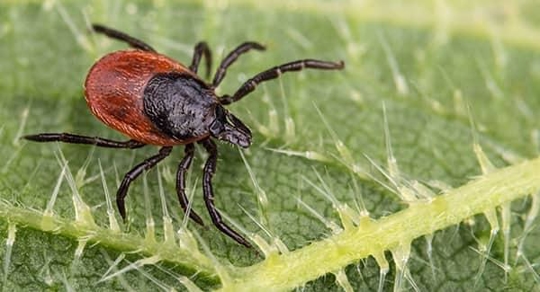Tick, Tick, Tick
These little pests are like a ticking time bomb ready to go off. They are carried onto properties on wildlife passing through your yard. There, they lay in wait and search for a food source—which is an animal or human. Ticks need blood to survive and to transition through their complete growth cycle.
Knowing what you are looking for and what precautions to take is key to reducing your chances of having ticks feed on you, your family, or your pets. There are five things you can teach your kids about ticks.
- Children want to play outside, so it is important for them to take precautions. Show them some pictures of ticks and explain what to look for. If they feel one crawling on them, they need to brush it off immediately. It is also wise for them to change their clothes when they have been running around outside—placing their dirty clothes directly into a hamper. Children also need to inspect their own body and tell a parent immediately if they find a tick that has embedded its head under their skin.
- Family pets need to run, play, and go to the bathroom, which means they will spend some time out in the yard where they may pick up ticks. Children are going to play with their pets, cuddle them, or pet them. Our pets need to be inspected for ticks routinely. Teach children what to look for and how to identify a 'bulging' tick. You do not want to wait until the tick has become engorged and fallen off.
- If your child has had a tick bite, have them tell you if they notice any changes in the area where they were bitten such as redness, swelling, or a ring around the site.
- If children will be playing outside or hiking, encourage them to wear long sleeves and tuck pants into socks so that they do not leave skin exposed. Wearing light-colored clothing makes ticks easier to spot.
- Teach children to bathe or shower and change clothing after being outside for activities such as picnics, hikes or playing, etc. Ticks may take a couple of hours before they attach themselves to their host so if they shower and change their clothing, they will help reduce the risk of a tick embedding itself on them.
Not Just a Small Problem
Ticks are not just a small problem. They pose potentially dangerous health hazards. People are at risk of getting various diseases from a tick bite. Some of these can have lasting effects, such as Lyme disease. Symptoms of a tickborne illness may not be evident for weeks or even months and may have similar symptoms. Some may have flu-like symptoms, so the disease may not get diagnosed quickly, which can lead to more problems.
You Have a Problem, and Big Blue Bug Has the Solution
While it is good to teach your children what to watch for so they can reduce their risk of getting bitten by a tick, it is even better to reduce the tick population on your property so that they have a safe area to play. Taking proactive measures by contacting the professionals at Big Blue Bug Solutions can help to keep you, your children, and your pets from getting safe.
Call or schedule an appointment so you can get back outdoors and feel reassured when Big Blue Bug Solutions is protecting your property.

